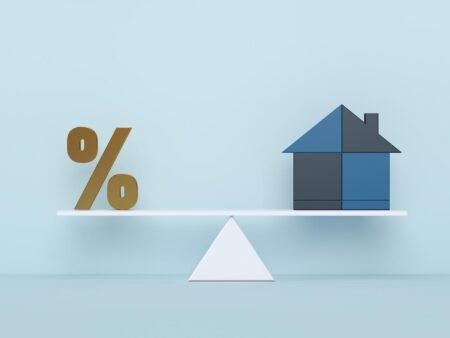When you apply for a mortgage, one way your lender will assess your financial capacity to afford your loan is to calculate your debt-to-income ratio (DTI). Your DTI ratio compares your total gross monthly income to your total monthly debt payments. Different mortgage lenders and loan programs have varying DTI ratio requirements.
Learn more: How much house can you afford? Use our home affordability calculator.
The term “DTI” can be confusing because most borrowers have two DTI ratios, not just one. The two DTI ratios are known as the “front-end” and the “back-end.”
Your front-end DTI ratio compares your total monthly gross income to your total estimated monthly housing expenses.
Your back-end DTI ratio compares your total monthly gross income to the sum of your total estimated housing expenses and your total monthly minimum payments for your other debts.
Your total monthly gross income is the total amount you earn each month before your income tax withholding and other deductions are taken out of your pay.
Your total estimated monthly housing expense may include:
Your total monthly minimum payments is the sum of the minimum payments you’re obligated to make each month for your:
-
Other debts, including auto loans, credit cards, and student loans
-
Any fixed, court-ordered payments, such as child support
-
Your estimated payment for your new mortgage
Tip: Note that this sum refers specifically to payments, not the total amount of debt or monthly expenses you have. You can run your own calculation to factor in additional monthly costs that lenders don’t factor in.
Dig deeper: Can you buy a house when you have student loans?
Front-end ratio: To calculate your front-end DTI ratio, divide your total monthly housing expense by your total gross monthly income.
Back-end ratio: To calculate your back-end DTI ratio, divide your total monthly housing expense and total monthly debt payments by your total gross monthly income.
The results will be decimals that you can convert to percentages.
Here’s an example:
-
Your gross monthly income is $6,000
-
Your estimated monthly housing expense is $1,200
-
Your monthly minimum payments for your other debts total $800
-
Your front-end DTI ratio is 1,200 divided by 6,000, which equals .20, or 20%
-
Your back-end DTI ratio is 2,000 divided by 6,000, which equals .33, or 33%
Tip: If you’re applying for a mortgage with a co-borrower (such as your spouse), you should use the total monthly gross income, housing expenses, and minimum debt payments for both borrowers before you calculate your DTI ratios.
Learn more: What percentage of your income should go to a mortgage?
It’s often said that in order to qualify for a mortgage, your front-end DTI ratio cannot be more than 28% and your back-end DTI ratio cannot be more than 36%. This is known as the “28/36 rule.”
While this “rule” may be helpful as a general guideline, in practice, it’s not always a fixed requirement.
Instead, the DTI ratios you’ll need to qualify will be different for different mortgage lenders and different types of mortgage loans.
The guidelines may also differ from the 28/36 rule if you have a non-occupant co-borrower or your loan is for a second home or an investment (rental) property.
In general, a lower DTI ratio will help you qualify for a mortgage while a higher DTI ratio may prove a barrier to loan approval.
A higher credit score or a larger down payment as a percentage of the home’s value may help you overcome a “too-high” DTI ratio. In this case, you may be charged a higher rate.
If your DTI ratio is too high for you to be approved for the mortgage you want, there are two ways to lower it:
-
Increase your monthly income
-
Decrease your total monthly debt payments
If neither of those fixes is possible for you right now, you may want to reconsider your mortgage plans. If your DTI ratio is already good to go or you can make some quick changes, a new mortgage may await you.
Dig deeper: How to buy a house with low income
A good debt-to-income ratio is usually under 36%. In general, you should be able to qualify for all common types of mortgages with a 36% DTI ratio.
A 50% debt-to-income ratio is pretty high, so it could disqualify you from several types of mortgage loans. But you could get a conventional loan backed by Fannie Mae with a 50% DTI ratio, and some lenders will allow a 50% DTI ratio for FHA or VA loans. If your debt levels are high, shop with multiple mortgage lenders to find the best deal.
There are two options for lowering your debt-to-income ratio: Earn more or pay down debt. This might be the opportune time to apply for a promotion at work. Or if you have some cash reserves to pay down an outstanding large debt, such as a high credit card balance, now may be the time.
Read the full article here












